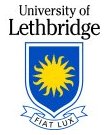Math 1410, Spring 2020
Solving Systems of Equations
February 6, 2020
| Sean Fitzpatrick |
|---|
| University of Lethbridge |
 |
Warm-Up
Examples
Which matrices are in REF? RREF? If neither, what's the next step?
Solving systems
Gauss-Jordan Elimination
Forward steps: perform Gaussian elimination to reach row-echelon form.
You could solve by back substitution at this stage.
(If there's no solution, you should already be able to tell.)
Back substitution can be tricky if there are parameters involved.
Backward steps: starting with right-most leading one, create zeros above, working up and to the left.
Examples
Example 1
Solve the system:
Example 2
Solve the system:
Example 3
Solve the system:
Example 4
Solve the system:
Homogeneous systems of equations
Homogeneous systems
Definition:
A system of linear equations is homogeneous if all the constant terms (right-hand sides) are zero.
Example:
For homogeneous systems, existence of solutions is not in question. (Why?) Instead, we're interested in whether solutions are unique.
Example
Solve the homogeneous system
Vector solutions
It can be convenient to write our solutions in vector form. For later work with matrices, we use column vectors. Instead of giving solutions for \(x_1, x_2, \ldots, x_n\) separately, we collect things into a vector \(\bbm x_1\\x_2\\ \vdots\\ x_n\ebm\text{.}\)
Vector solutions, continued
This can be notationally convenient. Instead of
Basic solutions
For a homogeneous system with parameters \(t_1, t_2, \ldots, t_k\) in the vector solution, the basic solutions are obtained by setting one parameter equal to 1, and the others to 0.
Notice that if \(\vec{v}\) and \(\vec{w}\) are both solutions to \(A\vec{x}=\vec{0}\text{,}\) then so is \(s\vec{v}+t\vec{w}\) for any real numbers \(s,t\text{.}\)
Example
Find the basic solutions to